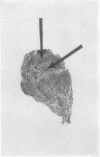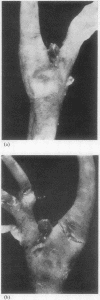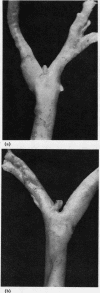Abstract
The weights of the carotid bodies have been measured in an unselected group of 40 successive cases coming for routine necropsy. Although the mean weight of the carotid bodies was higher in those subjects with emphysema or Pickwickian syndrome, this difference did not reach a level of statistical significance. Nevertheless, in a group of two patients with cor pulmonale and one with the Pickwickian syndrome the mean weight of the carotid bodies was significantly higher than that of the rest. Such observations would be consistent with enlargement of the glomic tissue in response to chronic hypoxia. In addition to these observations there was a significant correlation between the size of the carotid bodies and the weights of the left and right ventricles separately, while there was a substantially higher correlation between the weights of the carotid bodies and the combined weights of the two ventricles. Should such a correlation be determined by a causative link between these two measurements, a new metabolic role of glomic tissue will have to be considered. The histology of the carotid bodies was studied and differential cell counts were carried out in 21 cases. Enlargement of the carotid bodies was not accompanied by any change in the differential cell count, except that in one case with `cor pulmonale' and large carotid bodies areas of hyperplasia showed a predominance of the dark variety of type 1 (chief) cell.
Full text
PDF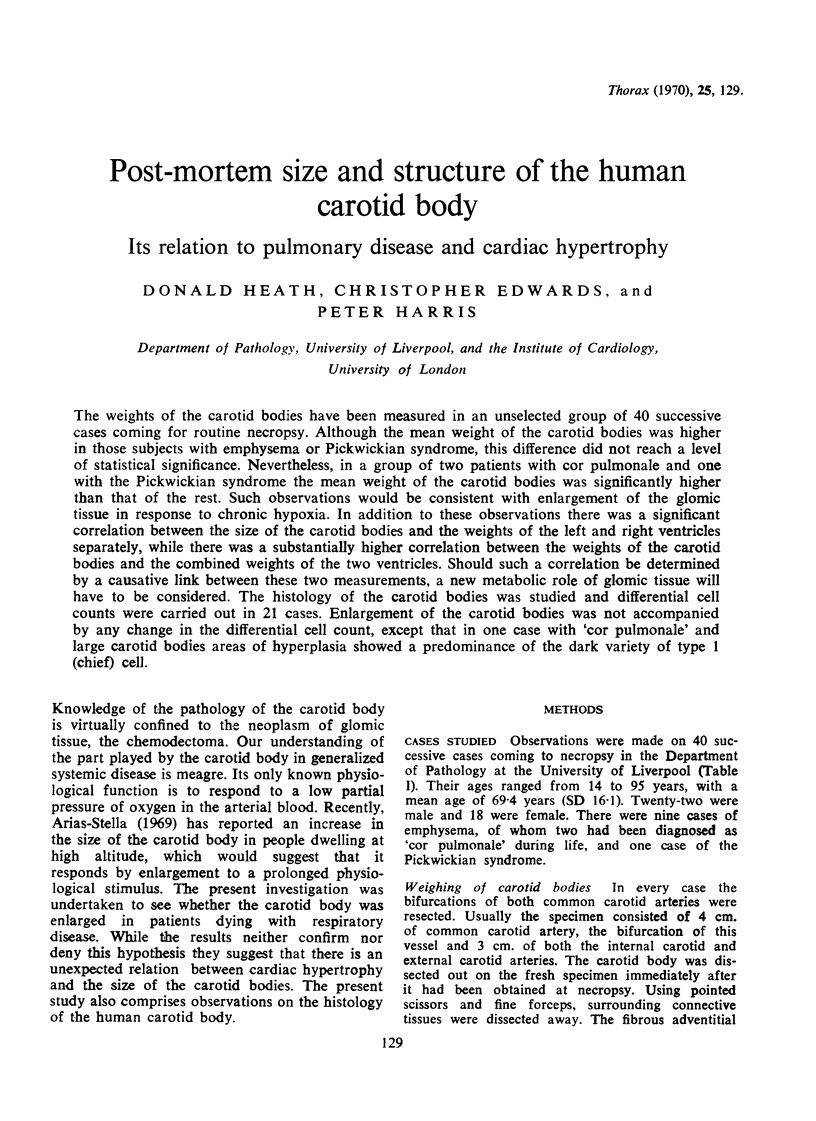
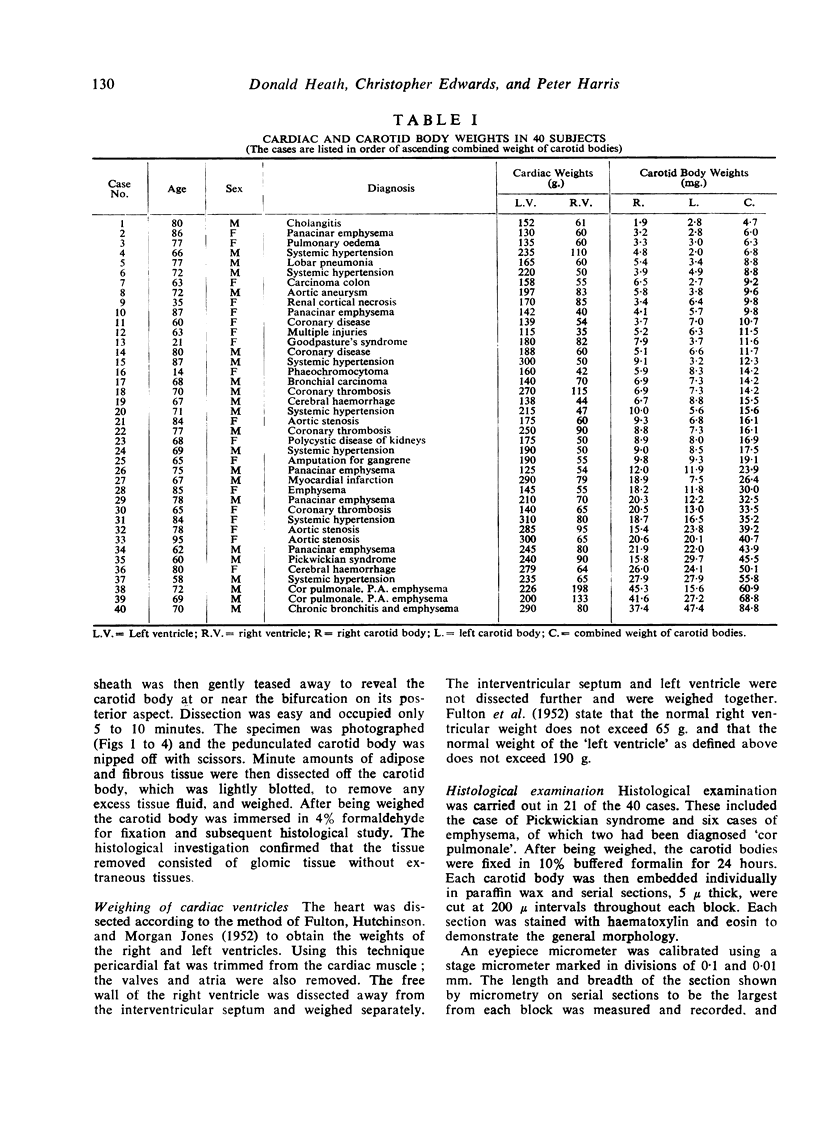
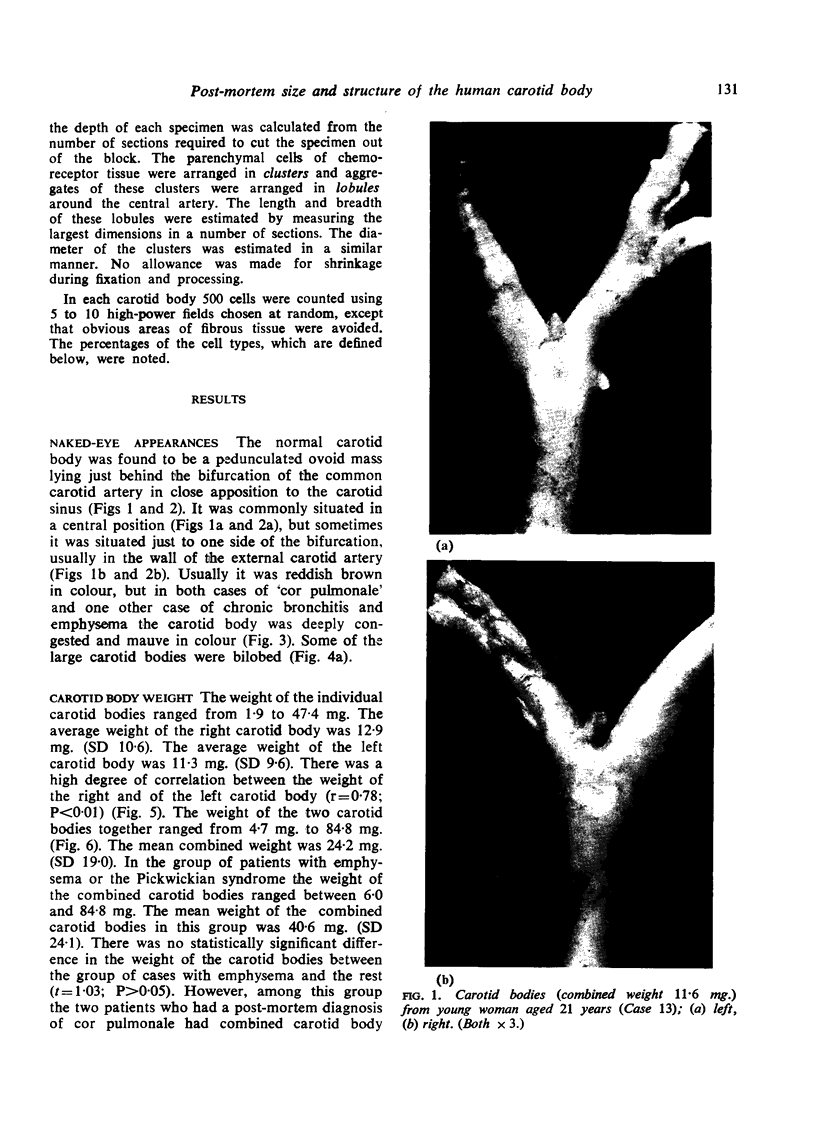

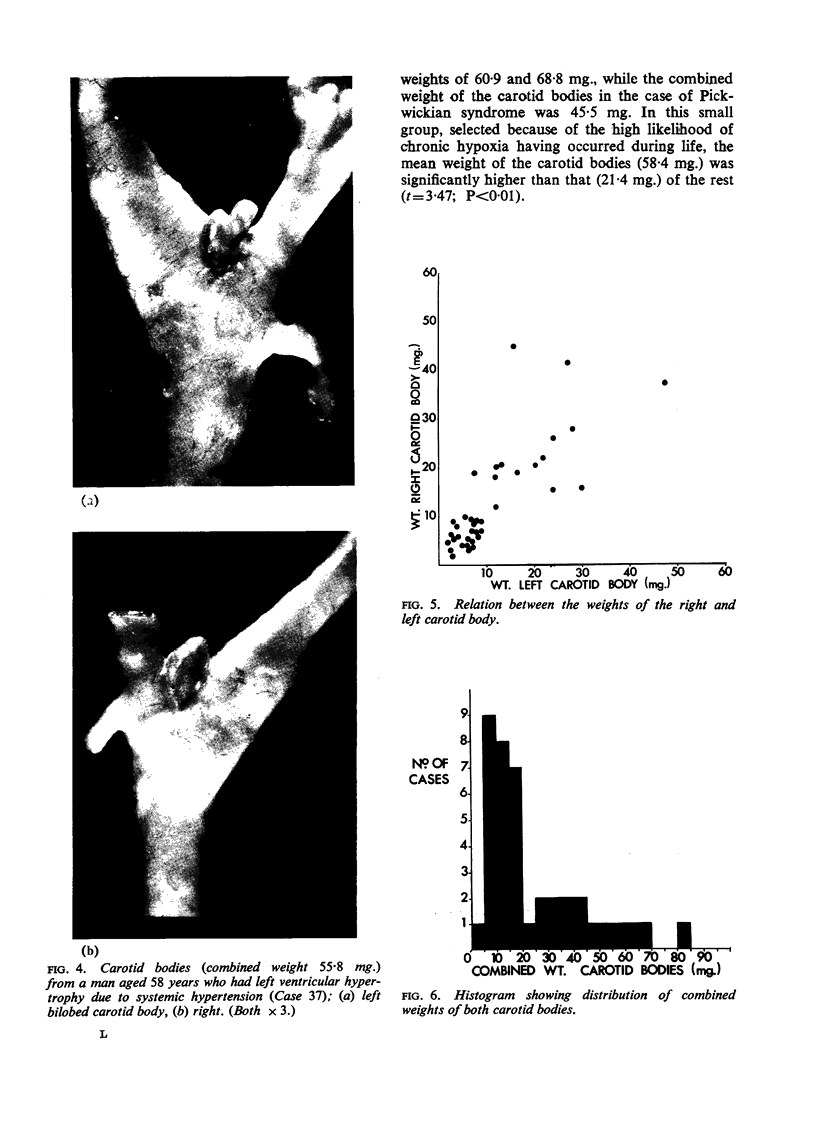
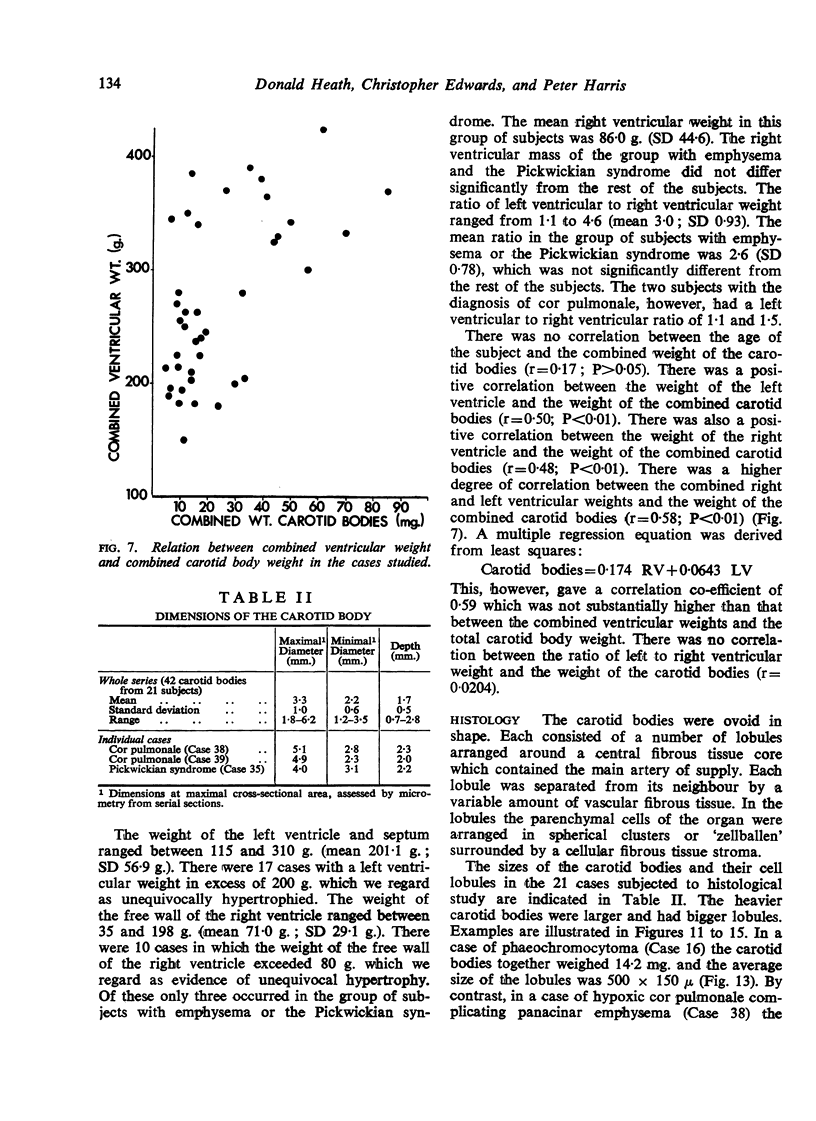
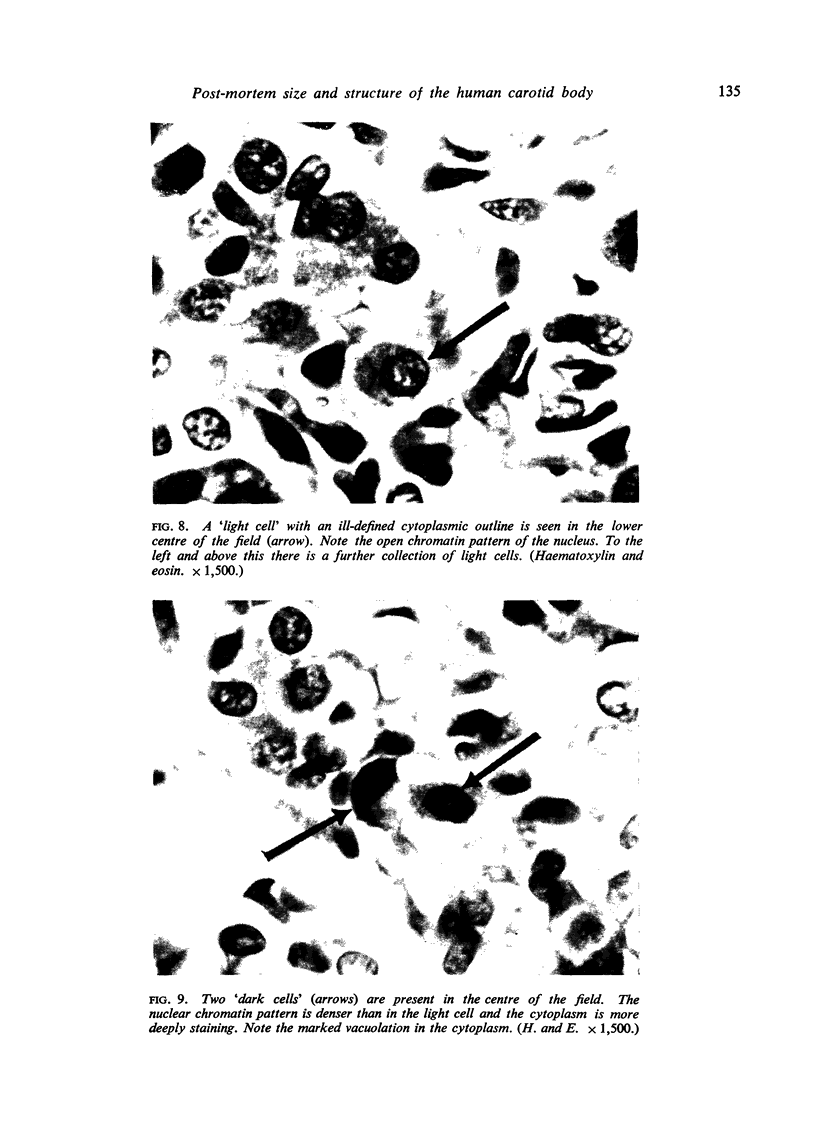
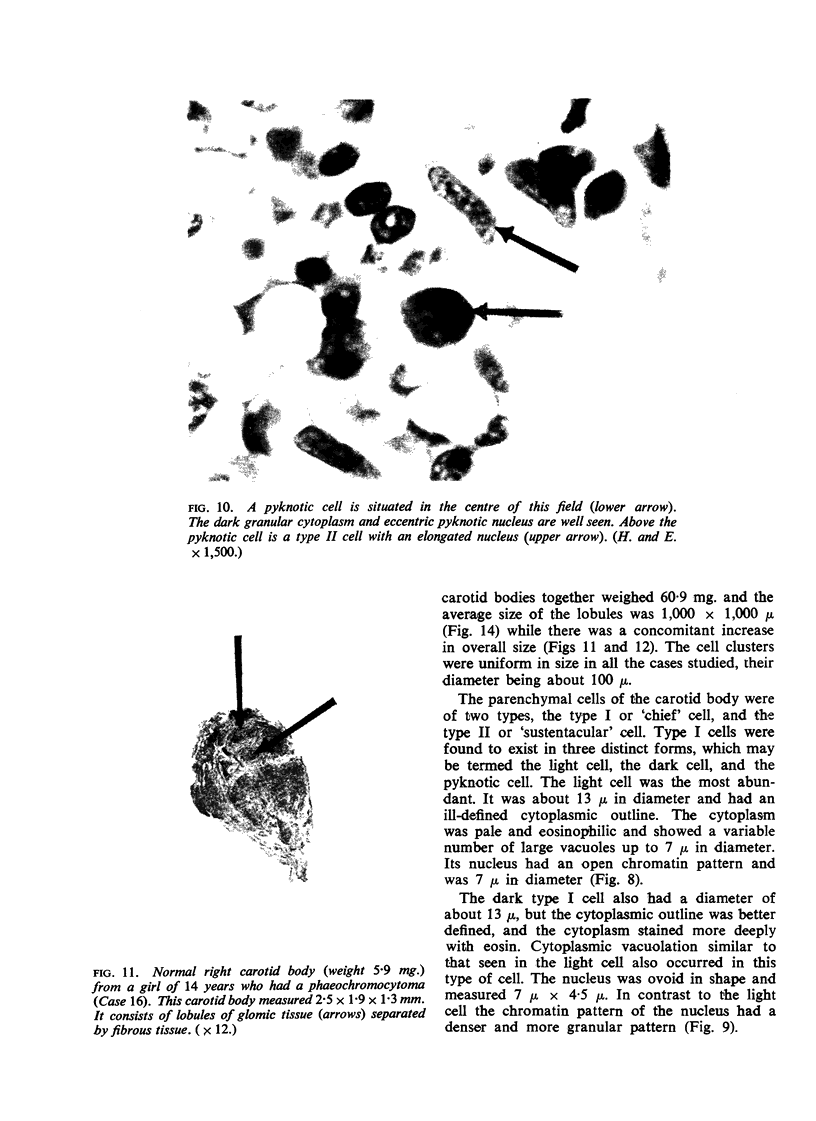
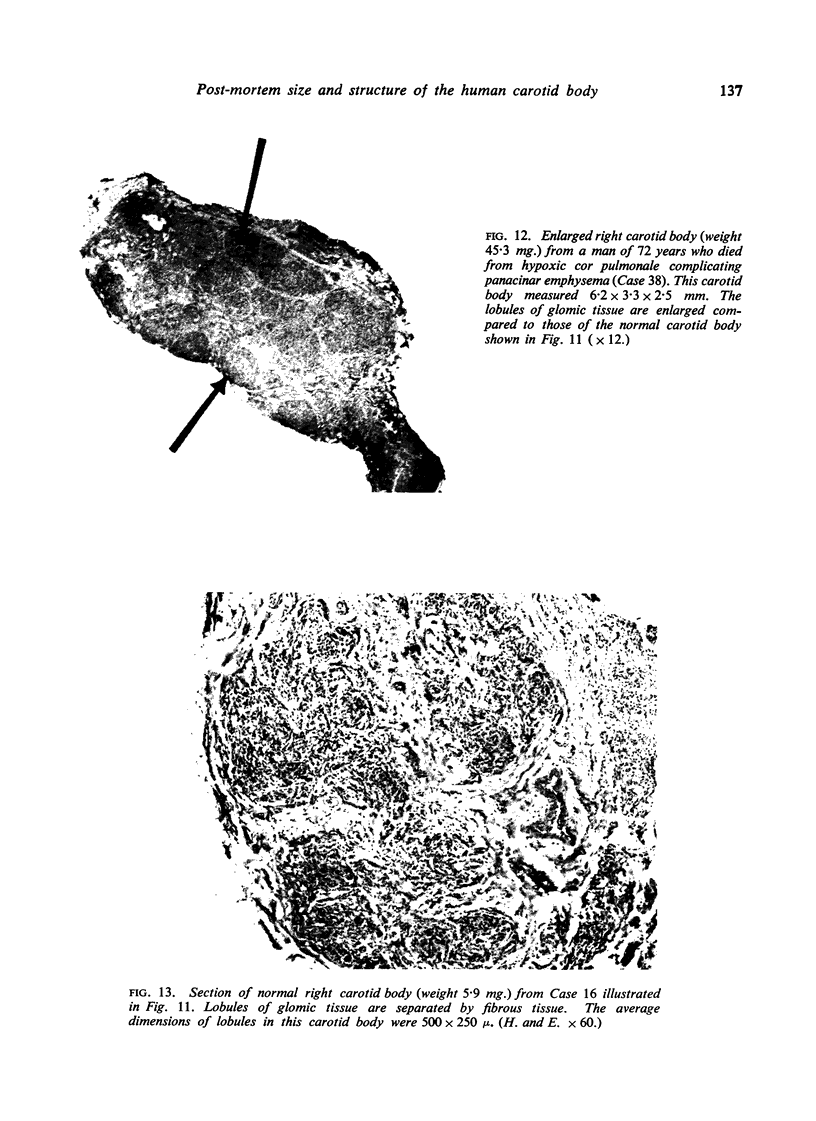
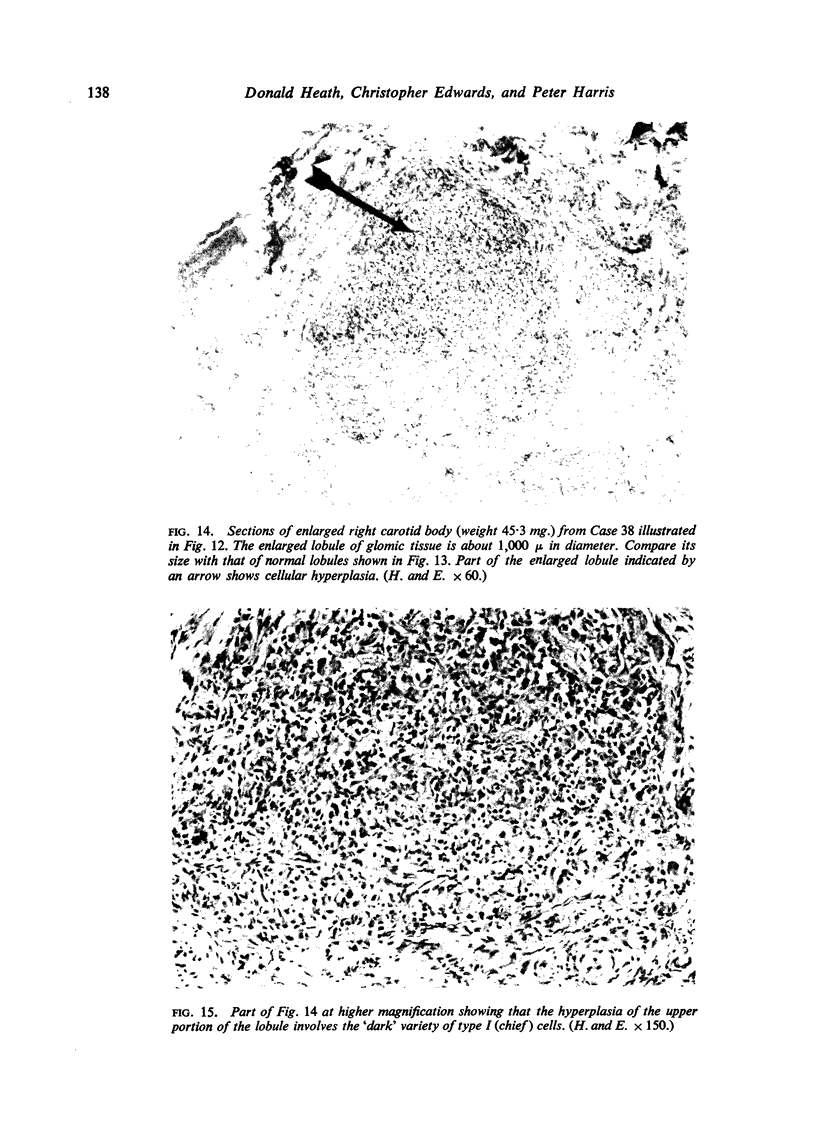
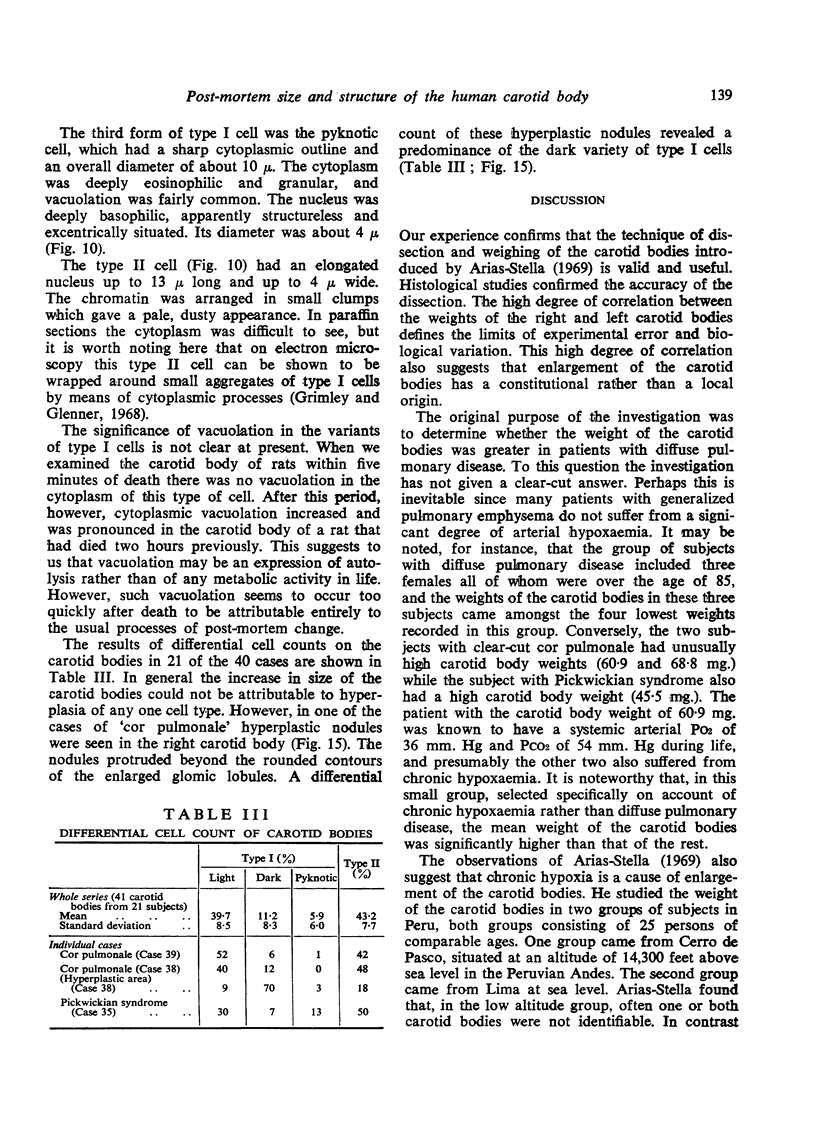
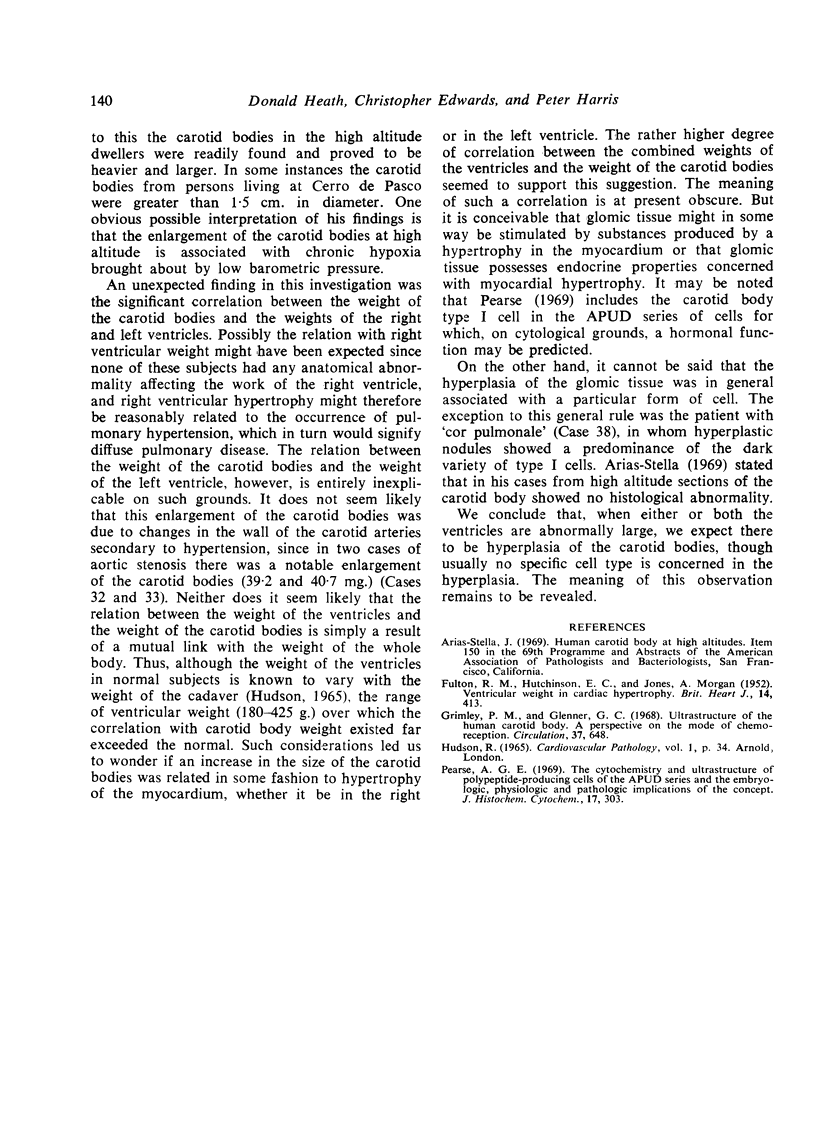
Images in this article
Selected References
These references are in PubMed. This may not be the complete list of references from this article.
- FULTON R. M., HUTCHINSON E. C., JONES A. M. Ventricular weight in cardiac hypertrophy. Br Heart J. 1952 Jul;14(3):413–420. doi: 10.1136/hrt.14.3.413. [DOI] [PMC free article] [PubMed] [Google Scholar]
- Grimley P. M., Glenner G. G. Ultrastructure of the human carotid body. A perspective on the mode of chemoreception. Circulation. 1968 Apr;37(4):648–665. doi: 10.1161/01.cir.37.4.648. [DOI] [PubMed] [Google Scholar]
- Pearse A. G. The cytochemistry and ultrastructure of polypeptide hormone-producing cells of the APUD series and the embryologic, physiologic and pathologic implications of the concept. J Histochem Cytochem. 1969 May;17(5):303–313. doi: 10.1177/17.5.303. [DOI] [PubMed] [Google Scholar]





